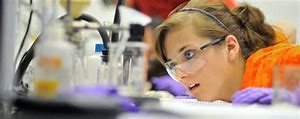Today in school districts across the US, there’s a high school chemistry lab with test tubes, Bunsen burners, the periodic chart, and tables of students. The only problem is that the class is being taught by a substitute teacher who may only have completed 60 college hours—in anything. And those students may see a different face in that classroom multiple times a week for months, or even an entire school year. Welcome to the reality of the teacher shortage. It’s here. It’s real. And we need to fix it.
We’ve known for several years now that we have a supply/demand challenge in some key areas: special education, English language learning, mathematics, and the sciences. The shortage is real, and it’s not just isolated to a few states. The fact is, we are approaching crisis levels in nearly every state and despite well-intentioned efforts by some state departments of education the problem doesn’t appear to be going away anytime soon.
The Association of Mathematics Teacher Educators provides some excellent information about teacher supply, demand, and shortages in that subject area. The AMTE cites factors such as declining enrollments in educator preparation programs; large classroom sizes and increasing student enrollments; and high turnover rates—as high as 8% annually–as major reasons why there is such a high need for math teachers. The AMTE takes it a step further, stating that math and science teachers who were prepared through alternative pathways actually average a 17% attrition rate, which suggests that we should be taking a very careful look at the quality of those alternative educator preparation programs. Preparing teachers for success in the classroom doesn’t necessarily have to be accomplished through traditional programs, but programs that focus on helping candidates pass their state licensure exam and then spending only a few weeks on effective teaching, learning, and classroom management methods need to be carefully scrutinized.
The New Jersey Center for Teaching and Learning is experimenting with an alternative preparation program of its own: taking experienced classroom teachers (with a focus on African American and Latino teachers) in other areas and preparing them to become science teachers. As a result of the program, that state licensed 50 more chemistry teachers and 217 more physics teachers since 2010. Based on its own description, the program provides a crash course in the new subject area of mathematics or science and helps prepare the teacher to pass the state’s required subject area exam. While this may sound good, the program’s long-term success still remains to be seen. Questions that must be answered include: (1) Out of those 267 teachers added to the roster, how many are still actively teaching math or science today? (2) How successful are those teachers as compared to those not prepared using this alternative method? (3) What is the impact on student learning and achievement?
The teacher shortage is real, and it’s not going away anytime soon. It’s time we had a national conversation to tackle it in a sensible, responsible way. Who will stand up for our students and lead this charge?
–rrf
Dr. Roberta Ross-Fisher is a national leader in education transformation, teacher preparation, and academic quality assurance. An accomplished presenter and writer, she currently supports educational institutions and non-profit agencies in areas such as educational systems design, online learning experiences, competency-based education, and accreditation. Roberta also blogs about academic excellence and can be contacted for consultations, webinars, and on-site workshops through her site (www.robertarossfisher.com).

